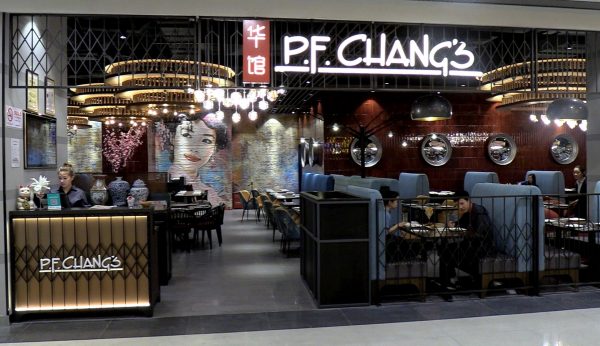
P.F. Chang’s, the US restaurant chain that many Chinese have become familiar with through the television sitcom The Big Bang Theory, plans to open more outlets in Shanghai after its first outpost in China seems to have overcome initial resistance by local diners to Chinese food made by a foreign brand.
Although the restaurant chain, which specializes in Chinese cuisine, was founded in 1993 by Paul Fleming and Philip Chiang, it has not until now opened an outlet in the country to which its food pays homage.
But its first restaurant in China, an investment of about 30 million yuan ($4.7 million), opened late last month in a shopping mall on the bustling East Nanjing Road in Shanghai.
Across the globe, the restaurant chain, which is based in the US state of Arizona, has more than 470 locations, including about 250 in the United States.
“Many shopping malls in Shanghai are interested and want to talk to us,” said Ryan Shen, the store manager of its Shanghai branch, on Tuesday. Location is very important to a restaurant, and more outlets may open soon, he added.
When asked how business has been at its first restaurant in China, Shen said: “It’s good. During the soft-opening time, lots of people, especially Americans, know that there’s a P.F. Chang’s in Shanghai and they feel amazed.”
Unlike the experience at other Chinese-food restaurants, where local residents bring their overseas friends to dine, at P.F. Chang’s Shanghai outlet, it is US expats and other foreigners who take their Chinese friends there to eat, he added. “Foreigners recommend the history, culture and even food of our restaurant to Chinese people.”
However, despite the potential big profits that opening in China offers to US restaurants, it has also delivered big headaches. In 2014, for example, some US fast food chains in China were found to be using substandard meat from a mutual supplier, Shanghai Husi Food, owned by the Chinese arm of US food giant OSI Group, and their sales in China lagged.
At P.F. Chang’s, some ingredients are imported, while others, such as vegetables, are sourced locally.
“We have our material SOP (standard operating procedure), a unique P.F. Chang’s SOP developed over the decades,” Shen said. “For our international outlets, we have more food safety SOPs than in the US, especially in Shanghai.”
The two dishes ordered by China Daily reporters, the original Chang’s chicken lettuce wraps and walnut shrimp with melon, were delicately made, and the shrimp balls were served in a big portion.
The dishes are less greasy and suit the taste of Asians-unlike the description by some Chinese media that more sugar and vinegar were added instead of salt.
Deng Qingxiang, 24, a tourist from South China, said: “The taste and look of the dishes are fresh to me. As a Chinese, the flavor is also what I can accept.”
Holly Campbell and Jayne Sargent, friends from Melbourne, Australia, said the restaurant’s decor is clean and fantastic, and there are many choices on the menu.
“It’s familiar to us because it looks more Western,” said Campbell.


